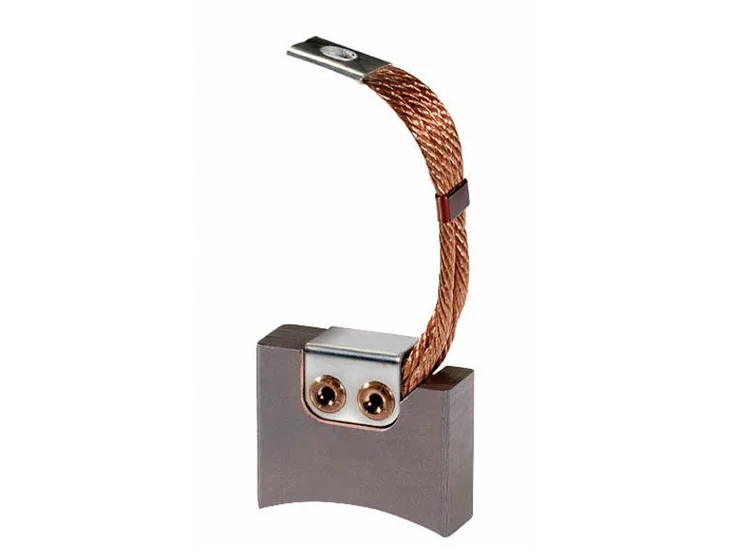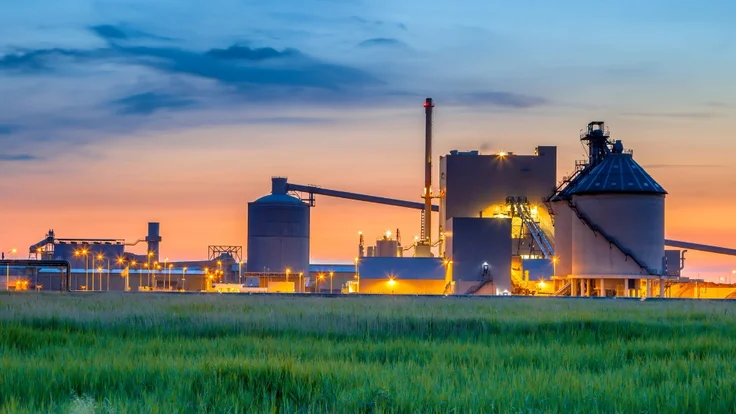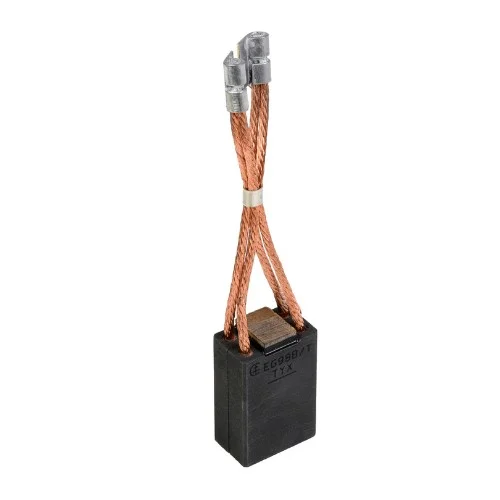Carbon brushes for DC motors
Brochures
pdf - 7.44 MB
pdf - 565.61 KB
pdf - 579.73 KB
pdf - 332.32 KB
pdf - 236.04 KB
pdf - 241 KB
pdf - 324.5 KB
pdf - 844.63 KB
pdf - 830.04 KB
pdf - 426.59 KB
pdf - 553.54 KB
pdf - 558.58 KB
-
Traction motors, lifting, rolling mills, winders…
DC motor brush grades
Mersen offers a wide range of electrographitic brushes, particularly adapted to DC motors, of which world-renowned EG34D, 2192, EG8220 and AC137 brush grades.
Mersen's carbon brushes for DC motors are in use in different equipment in railways, energy, and process industries, such as: traction, crushers, rolling mills, winders...
Electrographitic grades are prepared from carbon powders and coke; they are then subjected to high temperature thermal treatments (>2500 °C) to transform the basic amorphous carbon into artificial graphite.
Carbon brushes to meet your requirements
Our research efforts result in brush materials which provide greater commutating ability, longer life, and reduced commutator maintenance. Mersen produces advanced brush grades for service conditions ranging from high loads to low loads, contaminated environments (chemicals, moisture, oil vapors), and other difficult operating conditions. A grade able to meet your requirements can thus be readily selected among our variety of materials - please refer to Mersen’s Technical Guide Technical Guide "Carbon brushes for motors and generators"
Mersen, as a reference supplier of electric motor manufacturers, also offers dedicated services of refurbishment, replacement of brushes and brush-holders, re-engineering and trainings.
-
DC motors carbon brushes: main features
Mersen is capable of supplying you with carbon brushes of various designs, including shapes, components and sizes, with a high quality of manufacturing, in particular cable connection by tamping. When required, we could adjust the design (grade, cable, top pad, wafer size…) to adapt the carbon brush specifically to your DC motor for its application.
Operational properties can thus be optimized by enhancing the mechanical stability (shape, components, friction coefficient) and electrical performances (voltage drop at contact, commutation ability, load capacity), reducing the sensitivity to environmental condition (protecting / polishing / lubricating action on the commutator skin), etc. The function of a good brush is further explained in our technical data sheet reference TDS‑01.
In addition, Mersen offers solutions for alerting on brush wear (indicator devices, linked to the brush or to the brush-holder), or, to go further, monitoring of operational parameters with our complete solution MERSEN Total Monitoring.
-
DC motors carbon brushes
As a summary, Mersen's carbon brushes main features are:
- Specific designs
- Selected grades
- High quality tamping
- Optimized cable dimensions
- Good mechanical stability
- Low friction coefficient
- Adapted range of current density
- High transient current load capacity
- Good acceptability for commutation
- Wide speed range (from 15 to 55m/s)

- Electric and Diesel Electric Locomotives (traction motors)
- Transit & Metro (traction motors of metros, tramways or trolleybusses)
- Aerospace (auxiliary motors)
- Metallurgy (rolling mills, winders, wire drawing machines, extruders, winding machine)
- Paper plants (paper machines, winders)
- Cement plants (furnace motors, ventilators, ground or aerial conveyors)
- Plastic Industry (extruders)
- Forklifts (lifting motors, traction motors)
- Mining (draglines, shovels, wheel motors for front loaders and trucks, conveyors)
- Ports & marine (lifting motors for cranes and gantry cranes, propulsion motors, onboard motors)
- Oil & gas (drilling, lifting, pump and anchor motors)
- Elevators (lifting, ski lift motors)
- Ski lifts (motors)

-
Product Literature
Technical documentation
11/28/2024
PTT-TDS-01- The functions of a good brush what you should knowpdf - 565.61 KB
Technical documentation
11/28/2024
Grade AC137 - carbon brushes for traction motorspdf - 248.49 KB
Technical documentation
11/28/2024
Grade EG8220 - carbon brushes for traction motorspdf - 271.75 KB


